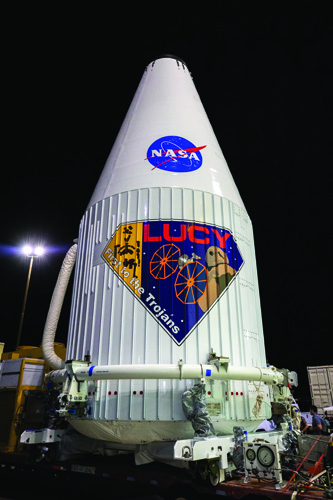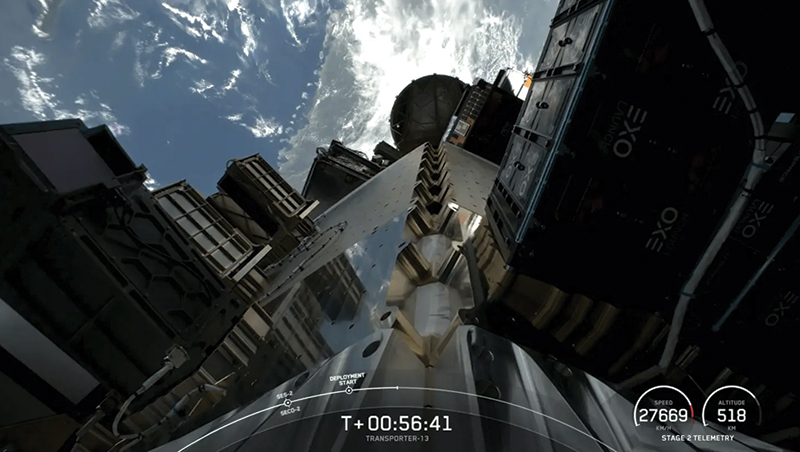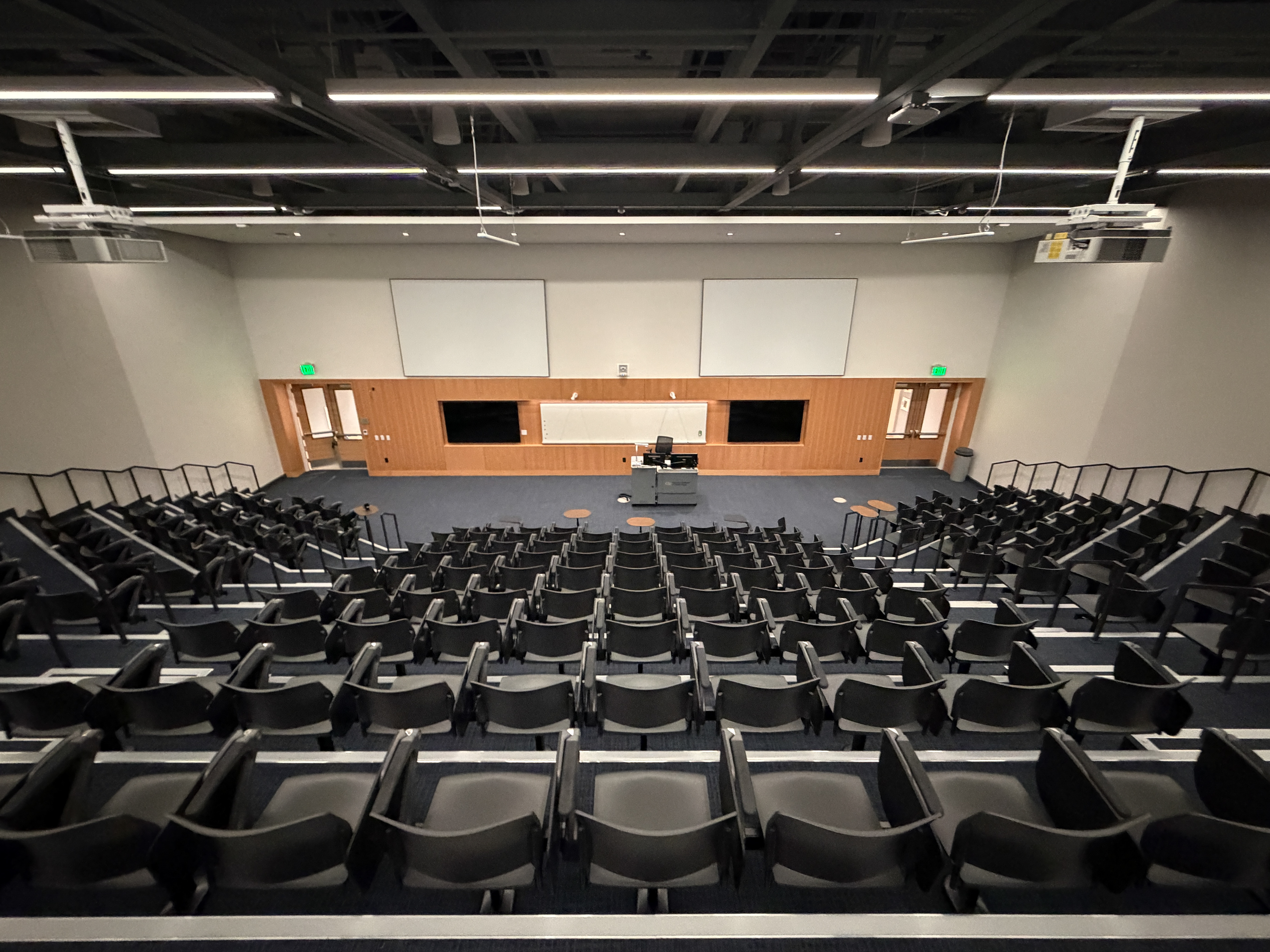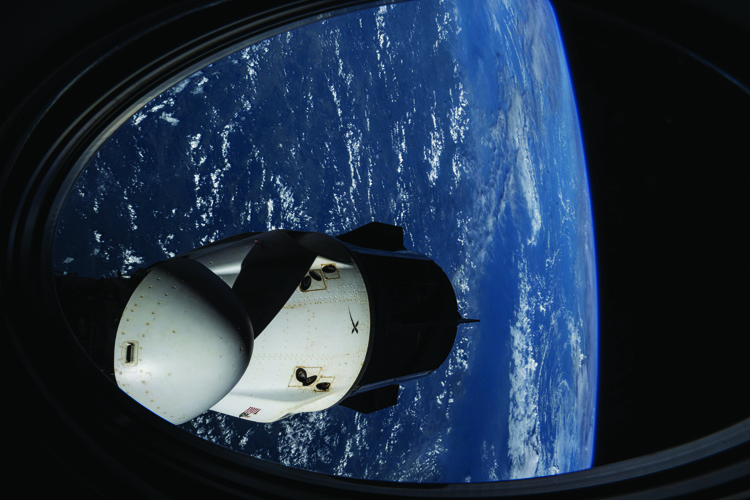Space 101
By: Jennifer Herseim | Categories: Featured Stories
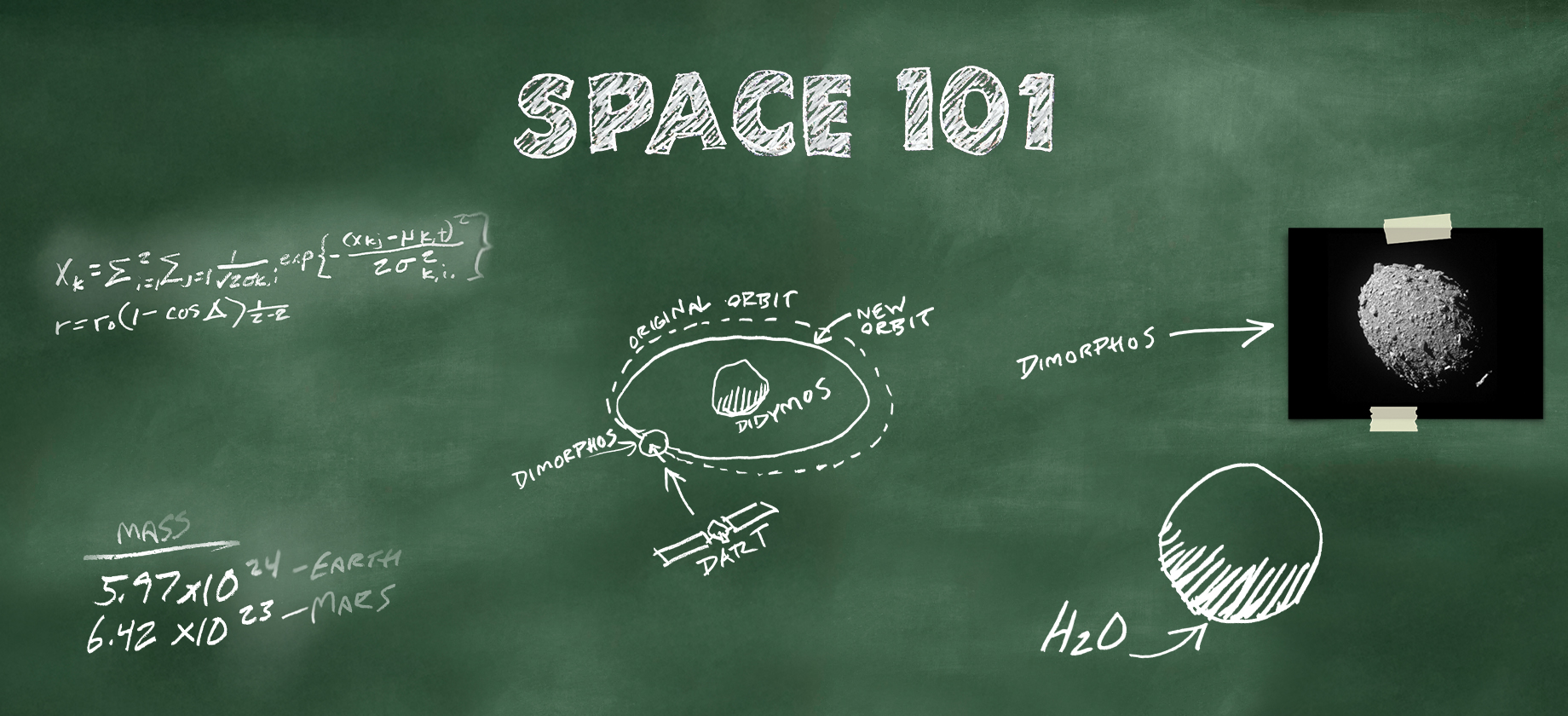
Ever wondered what a black hole looks like or how GPS knows exactly where you are?
We asked Georgia Tech’s experts to explain some of the great mysteries of space. Yes, this is rocket science, but this time you don’t have to read a 1,000-page textbook for the answers.
Can we deflect an asteroid away from Earth?
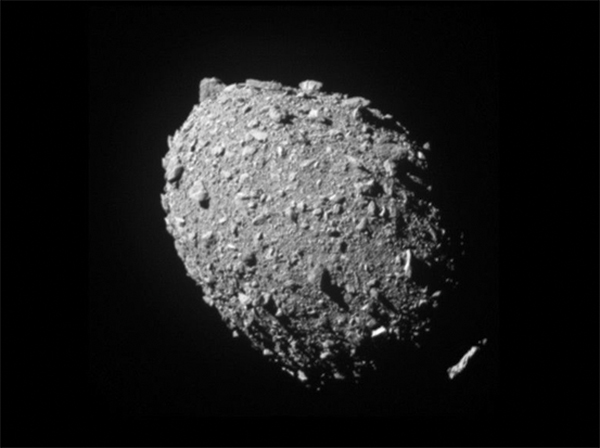 Yes, and we tested it. In the fall of 2022, NASA’s Double Asteroid Redirection Test (DART) spacecraft smashed into the asteroid Dimorphos, altering its orbit. While Dimorphos wasn’t a threat to Earth, the demonstration showed a planetary defense technology called kinetic deflection, which deflects an asteroid by a kinetic impact without an explosive device, could help avert a global catastrophe if such an event happens. How efficient the kinetic push is depends not only on the impactor’s collision but also on the fragments generated by the collision that depart from the asteroid at fast speeds, usually called “ejecta.” With the DART team, I studied the influence of ejecta on the push. We found that the ejecta formation plays a critical role in the efficiency of the push. We also proposed that smaller impactors, instead of a single big impactor, would enhance the push. This information could help NASA determine how to more strategically send an impactor/impactors for the greatest push possible.
Yes, and we tested it. In the fall of 2022, NASA’s Double Asteroid Redirection Test (DART) spacecraft smashed into the asteroid Dimorphos, altering its orbit. While Dimorphos wasn’t a threat to Earth, the demonstration showed a planetary defense technology called kinetic deflection, which deflects an asteroid by a kinetic impact without an explosive device, could help avert a global catastrophe if such an event happens. How efficient the kinetic push is depends not only on the impactor’s collision but also on the fragments generated by the collision that depart from the asteroid at fast speeds, usually called “ejecta.” With the DART team, I studied the influence of ejecta on the push. We found that the ejecta formation plays a critical role in the efficiency of the push. We also proposed that smaller impactors, instead of a single big impactor, would enhance the push. This information could help NASA determine how to more strategically send an impactor/impactors for the greatest push possible.
—Masatoshi Hirabayashi, Associate Professor, Daniel Guggenheim School of Aerospace Engineering
Other than on Earth, where in the solar system are we most likely to find water, and do you think there is currently life there?
There is water all around the solar system: Asteroids, comets, and other icy objects abound and there is likely water in permanently shadowed craters on the lunar poles and on Mercury, too. Many of these places are too cold to be habitable, but some, such as Ceres, a dwarf planet in the asteroid belt, might have been habitable in the past.
Jupiter’s moon Europa has about twice as much water as Earth despite being only 1.5% of Earth’s size. Europa may be habitable, but there’s a lot we still don’t know. One of Saturn’s moons, Enceladus, is thousands of times smaller than Earth, and likely has a subsurface ocean. The spacecraft Cassini was able to image plumes of ice particles jetting into space from beneath its icy crust. Cassini also found organic (carbon-bearing) molecules in the plume, which could be produced with or without life; we need to visit to find out!
Mars is covered in water that’s frozen and buried under dust and rock at its poles and likely deep within its crust. At the surface, it’s too cold and dry for life as we know it, but certain near-surface spots might be habitable every once in a while. And the subsurface has temperature and pressure similar to places on Earth where we know life is abundant. I think there’s a good chance we’ll find life there, and if so, we might even discover that we are Martians—that life started on early Mars and was brought to Earth by large meteorite impacts. It sounds spectacular, and it might just be true.
Saturn’s moon Titan might have a subsurface ocean today. And don’t count out Pluto: It, too, might have a subsurface ocean!
We should think about more than just water: A recent study found that of all the different kinds of oceans that can form on exoplanets, water isn’t even the most common! For sun-like stars, ethane (a hydrocarbon, like gasoline) and sulfuric acid might be more common than water. We don’t really know the range of chemistry that can happen in non-water liquids like methane, ethane, and sulfuric acid. Future missions will explore this further, including NASA’s Dragonfly rotorcraft, which will head to Titan to explore its methane seas and rain, and Rocket Lab’s mission to Venus, which will include an instrument that explores the chemistry in Venus’ clouds of sulfuric acid.
—Christopher E. Carr, Assistant Professor, Daniel Guggenheim School of Aerospace Engineering and School of Earth and Atmospheric Sciences
How does GPS work?
We live surrounded by unseen radio waves. Some are naturally occurring, like the light from our Sun, and others are created by human activities. The Global Positioning System (GPS) was built to use human-made radio waves that instantly locate your position anywhere on the Earth to within a few meters. A device as small as a quarter that fits in your cell phone or automobile receives these radio waves and decodes them into range measurements that are unique to your position. The signals are transmitted by GPS satellites in orbit that can be received by anyone with the proper equipment who can see them in the sky. The GPS signals contain enough information to determine the satellite’s position—where the signal came from—and the amount of time it took to reach your position. Since radio waves travel at the speed of light, this time of travel information is converted to a range measurement. We live in a three-dimensional universe, so we should need just three GPS measurements to determine our position. But we also have to correct the time on our GPS receiver to line up with GPS standard time, so this is another unknown, requiring a fourth GPS measurement. The GPS constellation is designed with enough satellites that you should always be able to make at least four measurements from any place on the Earth if you have a clear view of the sky.
—E. Glenn Lightsey, John W. Young Chair, Professor, Guggenheim School of Aerospace Engineering
Could a country claim territorial rights to the Moon or Mars?
The short answer is no. The Outer Space Treaty (formally, the Treaty on Principles Governing the Activities of States in the Exploration and Use of Outer Space, including the Moon and Other Celestial Bodies) states that the Moon is not subject to national appropriation by claim of sovereignty, occupation, or other means, so no country can claim to “own” any territory on the Moon. That said, the United States made it clear in the 2015 Commercial Space Launch Competitiveness Act that under U.S. interpretation, this limitation still allows for U.S. citizens and companies to recover, utilize, and sell lunar resources. (A common analogy is to fishing in international waters—you can’t claim to own the ocean, but you can catch and sell fish you catch in international waters.) So, while no one can claim territorial rights on the Moon, they may still develop and use lunar resources. The details of how this would work in practice are yet to be determined.
— Mariel Borowitz, Associate Professor, Sam Nunn School of International Affairs
What does a black hole look like?
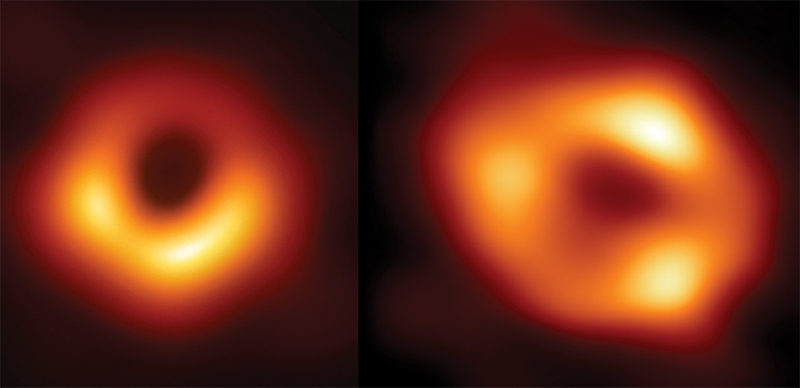 If you happened to be in the vicinity of a lonely black hole, floating somewhere in our galaxy, you probably wouldn’t know it was there. If you were close enough, you would start falling toward it, but even in that close approach it wouldn’t look like much of anything. You would feel it but not be able to see it. Now, if our black hole was pulling in some gas from its surroundings, perhaps from a companion star or a gas cloud, the surrounding area would glow as this gas swirls, heats up, and emits light. You would certainly feel warm during your journey, and you still wouldn’t see the black hole itself, but you’d be treated to a light show. It’s only when you focus on the center of this glow (and at the right frequency of light!) that you would make out the black hole’s telltale “shadow.” The absence of light against the surrounding brightness is the quintessential image of a black hole and it is one we have finally captured with our telescopes.
If you happened to be in the vicinity of a lonely black hole, floating somewhere in our galaxy, you probably wouldn’t know it was there. If you were close enough, you would start falling toward it, but even in that close approach it wouldn’t look like much of anything. You would feel it but not be able to see it. Now, if our black hole was pulling in some gas from its surroundings, perhaps from a companion star or a gas cloud, the surrounding area would glow as this gas swirls, heats up, and emits light. You would certainly feel warm during your journey, and you still wouldn’t see the black hole itself, but you’d be treated to a light show. It’s only when you focus on the center of this glow (and at the right frequency of light!) that you would make out the black hole’s telltale “shadow.” The absence of light against the surrounding brightness is the quintessential image of a black hole and it is one we have finally captured with our telescopes.
— Feryal Özel, Professor and Chair of the School of Physics
When two satellites are heading for collision, which one must move out of the way?
Neither! There is currently no globally agreed-upon requirement that states when or how a satellite should maneuver to avoid a collision. Today, individual spacecraft operators determine whether they want to maneuver, and coordination between spacecraft operators—if it occurs—is often conducted by phone or email, although sometimes contact information isn’t readily available. This lack of coordination for space traffic has become a more urgent issue as the number of satellites has skyrocketed in recent years. Many countries, including the United States, are investing in improved space situational awareness —the ability to track spacecraft, predict their future location, and identify potential collisions. Some industry groups have suggested potential “right-of-way” rules that could be applied for satellites, but these have not yet gained broad acceptance. The United Nations Committee on the Peaceful Uses of Outer Space recently formed an expert group on space situational awareness to discuss these issues, so we may see advancements in this area soon.
— Mariel Borowitz, Associate Professor, Sam Nunn School of International Affairs
When do you think humans will be living on Mars?
My best guess is that it may take a few decades before humans are living continuously on Mars, but this depends upon many factors, such as maintaining our national commitment to exploration; international competition or cooperation; how much the private sector, AI, and robotics accelerate space exploration; avoiding a major war; and more fundamentally, whether Mars’ gravity is enough to allow humans to fully adapt, and ultimately go through our entire life cycle. The Moon is key to addressing that fundamental question. If other small mammals and, ultimately, humans can adapt to and sustain themselves on the Moon, then Mars is almost surely feasible, despite many technical challenges. Before that happens, there will be lots to celebrate: the first human landing, the first pizza made on Mars, the first generations of animals, and much more. We will still have a need to connect to the natural world. I recently met Japanese Astronaut Takao Doi, who is already growing trees under low pressure near Kyoto, Japan, in anticipation. Imagine a future where you are on Mars, sitting in a rich and vibrant garden. What plants would you have around you? We will bring all the good and the bad parts of ourselves and will see how they interact with a capital-intensive lifestyle that will require incredible levels of coordination. That might be one of our biggest challenges, but also an opportunity for us to come together, whether the goal is to live on Mars or to address planetary-scale challenges on spaceship Earth.
—Christopher E. Carr, Assistant Professor, Daniel Guggenheim School of Aerospace Engineering and School of Earth and Atmospheric Sciences
Celestial Treasures
The Georgia Tech Library Archives collection of rare astronomy books includes the first printed star atlas of the western world.
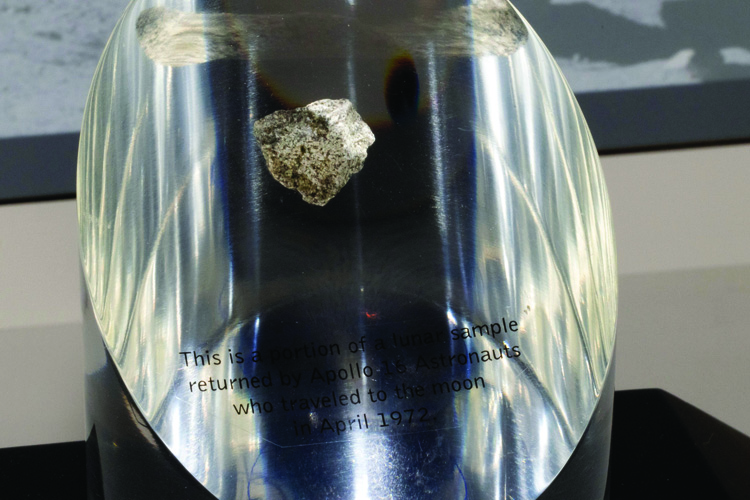 Piece of the Moon
Piece of the Moon
A lunar sample collected by John Young, AE 52, HON PhD 03, during Apollo 16 is on display in the Grove level of the Price Gilbert Memorial Library. It’s estimated the sample was on the Moon for at least 400 million years. Young gathered it at the base of “Stone Mountain,” the codename Young gave to what NASA calls the Descartes site.
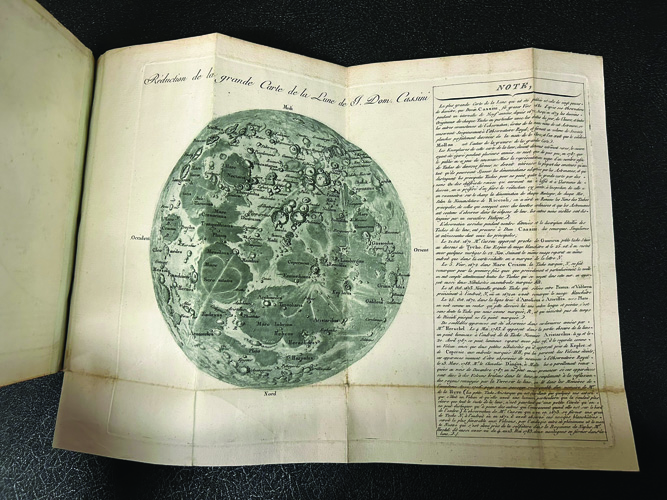
First Comprehensive Star Catalog
John Flamsteed (1646–1719) was the first Astronomer Royal of England and a perfectionist who hesitated to publish his work. The Georgia Tech Library’s rare books collection includes a second-edition French copy of The Atlas Céleste de Flamstéed, printed in 1776, a rare catalog published after Flamsteed’s death that features 2,935 stars. Astronomers used his celestial atlas for nearly 100 years. It includes an illustration of the first printed Moon map engraved by Giovanni Domenico Cassini in 1679.
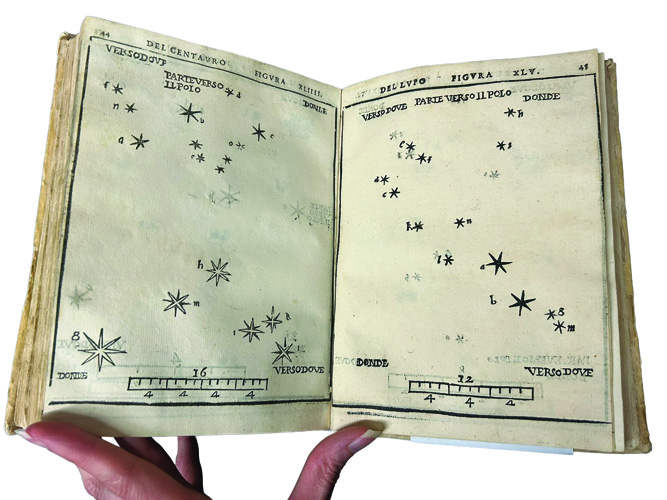 First Printed Star Atlas of the Western World
First Printed Star Atlas of the Western World
De le Stelle Fisse is considered the first printed star atlas of the Western world. This rare book, housed in the Georgia Tech Library, was written by Alessandro Piccolomini in Venice circa 1566. The book includes 47 star maps and three pages concerned with the rising and setting stars in the 12 zodiac signs.
The Baseline–Space Edition
|
1. 14 astronauts graduated from Georgia Tech.
|
2. Tech is 1 of only 4 universities in NASA's Deep Space Network, the agency's international array of giant radio antennas supporting interplanetary spacecraft missions.
|
|
3. 30% increase in the propellant capacity in satelites from a novel fluid management technology that Tech reseachers developed.
|
4. 1.35 millimeters, or the thickness of a dime, is the level of precision that Georgia Tech's propulsion systems must be able to achieve so that two spacecraft can send starlight to each other while 100 meters apart. |
|
5. 1 of 8 Tech professor Masatoshi Hirabayashi is one of eight scientists selected to study ancient asteroids as part of NASA's Lucy Mission, Lucy will explore a record number of asteroids.
|
6. 56 minutes: Time that Georgia Tech's latest Cubesat, called Orca2B, successfully deployed from a SpaceX Falcon 9 Rocket this April Orca2B will help reseachers better track objects in Earth's orbit, it's the first of two Cubesats as part of the orbital calibration 2 mission. Reseachers from Tech's space systems design lab have been working on the Cubesat since 2021.
|
| 7. 80% of undergraduate AE students engage in research before they graduate. | 8. $300,000 value of the grant that kickstarted the Daniel Guggenheim School of Aeronautics in 1930, with $6,000 a year dedicated to research. |
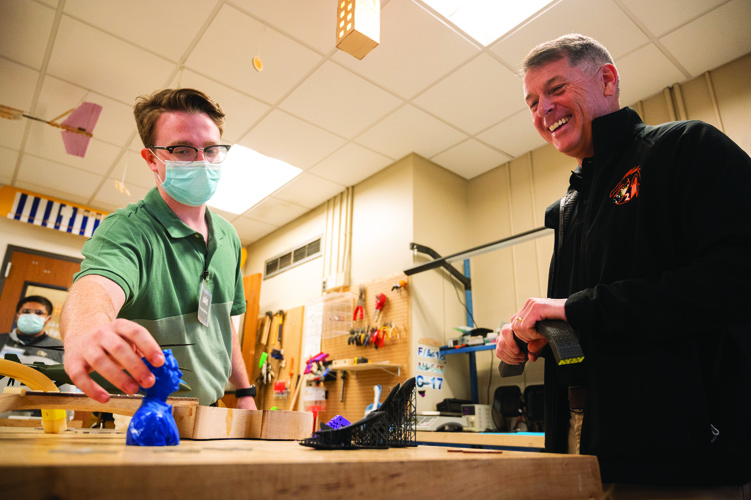
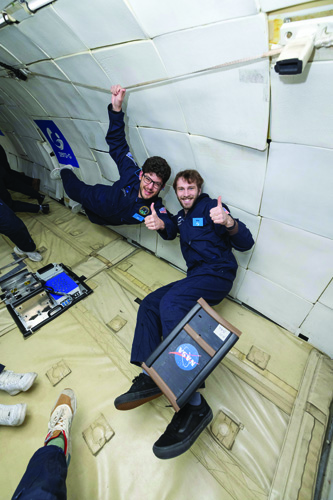 Researchers from Georgia Tech tested multiple CubeSat experiments in microgravity this year.
Researchers from Georgia Tech tested multiple CubeSat experiments in microgravity this year.